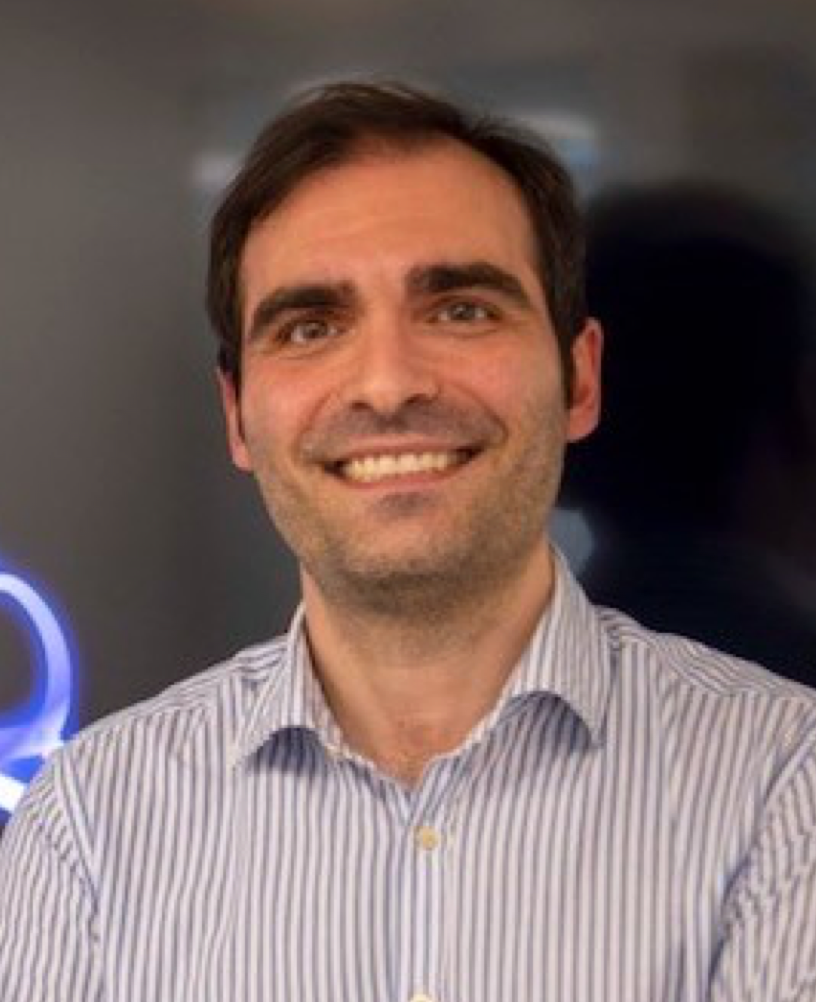Jorge Salamanca1, Jin Ye Yeo2
1Department of Cardiology, Hospital Universitario de La Princesa, Madrid, Spain; 2CDT Editorial Office, AME Publishing Company
Correspondence to: Jin Ye Yeo. CDT Editorial Office, AME Publishing Company. Email: editor@thecdt.org
This interview can be cited as: Salamanca J, Yeo JY. Meeting the Editorial Board Member of CDT: Dr. Jorge Salamanca. Cardiovasc Diagn Ther. 2024. https://cdt.amegroups.org/post/view/meeting-the-editorial-board-member-of-cdt-dr-jorge-salamanca.
Expert introduction
Dr. Jorge Salamanca (Figure 1) is a consultant in the Department of Cardiology at Hospital Universitario de La Princesa in Madrid, Spain. His clinical interests and professional activities focus mainly on clinical cardiology, heart failure, and acute cardiac care.
He earned his medical degree from the University of Valladolid in 2006 and completed his cardiology clinical training at Hospital Universitario de La Princesa, where he assumed a staff position in 2012. In 2016, he obtained full certification as an acute cardiovascular care specialist from the Acute Cardiovascular Care Association, European Society of Cardiology. Additionally, he is a member of the Health Research Institute of La Princesa University Hospital (IIS-IP).
Since 2012, Dr. Salamanca has been a teaching collaborator at the Autonomous University of Madrid and has served as a Resident Mentor since 2022. He has published numerous original and review articles and serves as a reviewer in several leading peer-reviewed cardiology journals.

Figure 1 Dr. Jorge Salamanca
Interview
CDT: What initially motivated you to specialize in acute cardiovascular care?
Dr. Salamanca: Acute cardiovascular patients are fascinating. It is a true challenge. In this field, one must make quick decisions, work as part of a team, and handle complex situations. All of this is aimed at helping patients overcome serious conditions. Additionally, it is an expanding field with significant advancements, and there is still so much to do and progress on.
CDT: What drew you to focus your research on Takotsubo syndrome?
Dr. Salamanca: Takotsubo syndrome is a fascinating condition. Its pathophysiology is not well understood; we have gradually clarified its prognosis over the years, but we lack treatment based on solid data and clinical trials. It combines the aspects of acute cardiovascular patients, who can sometimes be so unpredictable, with a field that is yet to be fully explored and defined.
CDT: Could you provide a brief overview of the recent advancements or innovations in the treatment and management of Takotsubo syndrome?
Dr. Salamanca: Several groups are actively researching and sharing progress in this complex and intriguing condition. Recently, we published solid data demonstrating the prognostic relevance of early (<10 days) versus late recovery of cardiac function in these patients (1). We have also highlighted the significance of secondary triggers, particularly neurological ones, that worsen the prognosis. Furthermore, epidemiological and outcome data indicate seasonal and even geographical differences in hospital visits. However, we still have a long way to go to unravel many unknowns and guide treatment that will improve the prognosis for these patients.
CDT: What are some aspects of research in clinical cardiology that you believe have received insufficient attention?
Dr. Salamanca: Certain conditions like spontaneous coronary artery dissection and Takotsubo syndrome are often underdiagnosed and lack solid evidence regarding their causes and treatments. These are good examples where quality randomized studies and continued initiatives in large national and international registries are needed to advance our knowledge and care. Moreover, the care spectrum for elderly and very elderly patients should gain more attention as our populations are aging. Similarly, the representation of women in cardiovascular disease research has been lacking in some areas, and we need to address this. Once again, Takotsubo syndrome and spontaneous coronary artery dissection are two prime examples.
CDT: As a reviewer for leading cardiology journals, what qualities do you believe make a research study valuable and impactful?
Dr. Salamanca: Novelty, clinical relevance, and rigor are the foundations of a study that will make an impact and help improve our daily practice.
CDT: Can you discuss any ongoing research projects or studies you are involved in and their potential significance for clinical practice?
Dr. Salamanca: We are currently launching and leading a clinical trial on beta-blockers and Takotsubo syndrome from our center (led by Dr. Fernando Alfonso). We are very excited about it, as we believe it could shed light on this fascinating yet not well-understood condition, its management, and its prognosis. We are also involved in other exciting projects, such as national registries for myocarditis, spontaneous coronary artery dissection, and Takotsubo syndrome itself, where we work with passion and dedication to expand our understanding of these conditions.
CDT: As an educator, what are your main goals for educating and guiding future cardiologists?
Dr. Salamanca: This is a fundamental aspect. We are responsible for training the doctors and cardiologists of the future. As such, we must train cardiologists who have a critical spirit, rigor, empathy for patients, teamwork skills, initiative, and leadership. Education, research, and, of course, excellence in patient care are pillars of training our future cardiologists.
CDT: Looking ahead, what new areas of research or clinical practice are you most interested in exploring?
Dr. Salamanca: I believe that the collaboration between clinicians and basic researchers is essential to advance our knowledge and treatment of many cardiovascular processes we deal with daily. In this regard, advancing toward more personalized medicine and gaining knowledge at all levels, from molecular to clinical, is a fascinating goal.
CDT: As the Editorial Board Member, what are your expectations for CDT?
Dr. Salamanca: I hope our journal will continue to be marked by rigor and quality, and I aim to help it grow and become a reference for colleagues eager for updates, improvement in clinical practice, and sharing advancements in this fascinating field to which we dedicate ourselves.
Reference
- Almendro-Delia M, López-Flores L, Uribarri A, et al. Recovery of Left Ventricular Function and Long-Term Outcomes in Patients With Takotsubo Syndrome. J Am Coll Cardiol 2024;84(13):1163-1174.
